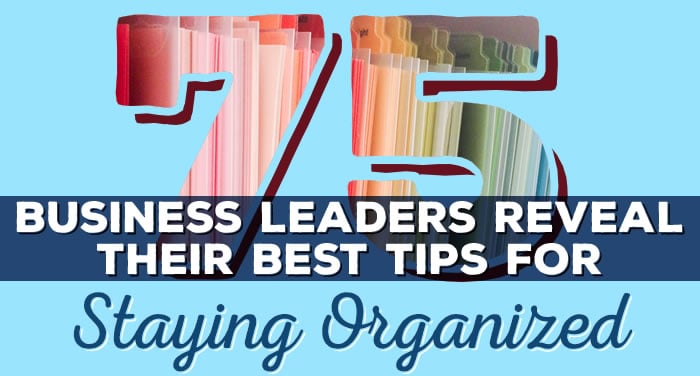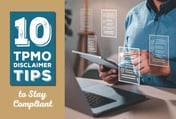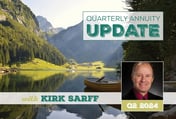I asked 75 small business owners and company leaders a simple question:
How do you keep things organized?
Whether you’re running things old school or are digging into 21st century software solutions, we all could use a little bit of help when it comes to organizing our workflow.
We have answers for the following 10 categories:
- Staying Focused
- Your Email
- To-Do Lists
- Scheduling & Planners
- Your Work Space & (Ugh) Paperwork
- Your Website
- Goal-Setting
- Productivity Software & Digital Tools
- Your Phone
- Work Hours
...and we’re off!
Staying Focused

Todd Mitchem
CEO, Speaker, and Author
“As the CEO of our small firm, I stay efficient by first doing what I call, ‘Shutting it Down.’
This involves me having the discipline of shutting my phone off, my email, or whatever distraction could take me off course. In the past, I tried to be all things to all people, but I realized if I wanted to achieve a big goal, like when I wrote my book You, Disrupted: Seizing the Life You Want by Shaking, Breaking, and Challenging Everything, I had to clear the clutter and noise of a modern society to stay focused.
All of my successful friends and colleagues do the same thing. We are made to believe that we must always be plugged in, checking status, and jumping when a new notification pops up, but this is flawed and limited thinking. By ‘Shutting it Down,’ we are able to become immersed in the task at hand, and we could finally focus on creating.”
 John Crestani
John Crestani
Marketing & Internet Business Expert
“Little items are always going to pop up throughout the day, but I try not to let them get in the way of the major tasks I need to accomplish, because usually the little tasks are more-so about maintaining the business as opposed to moving the business forward.
As an entrepreneur, you've got to constantly be moving your business forward in order to survive. If you're not moving the business forward, there's always someone out there that is.”

Lori Cheek
Founder & CEO of Cheekd
“One of my favorite productivity hacks comes with the help of an app called StayFocusd. When working from home, Facebook and Twitter can be a major distraction. StayFocusd helps avoid these distractions by restricting the amount of time you can spend on them.
The Google Chrome extension lets you set specific time restrictions on certain websites with a 10-minute default option. Once your time has been used up, the sites you have selected to block can’t be accessed for the remainder of the day.”

Maura Thomas
Author and Founder of RegainYourTime.com
“When you decide you are going to spend some time on an important task, ELIMINATE any possible distractions! This seems like a no-brainer but I’m always surprised at how uncommon it is.
Close your email client, shut off any social media notifications, silence your ringer, shut off the television, etc. If you need noise, play instrumental or classical music. Song lyrics tend to send our brain off in distracting directions, as does the tendency to sing along.
Another option: white noise. Turn on a quiet fan, or go outside to the sounds of nature.
Small personal rewards can help motivate you as well. For example, if I spend 30 minutes on this, I’ll allow myself 10 minutes of a video game, or blog surfing, or a grande mocha latte, or whatever appeals to you.”

Paul Koger
Founder of Foxy Trades LLC
“The use of social media is not allowed at our firm during trading hours (9:30 am to 4pm). One distraction can make you lose your focus and lose some serious money for the firm.
Unfortunately, we learned it the hard way and had to implement this rule.”

Gene Caballero
Co-Founder of GreenPal
“To get myself focused during the day, I have a keyboard set up in my office, and I play piano.
Playing any instrument has been scientifically proven to engage practically every area of the brain at once — especially the visual, auditory, and motor cortices — so it gets my mental capacity going again and helps me through my afternoon. It's like a mental full-body workout.”
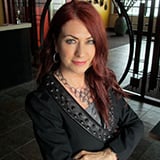
Sonia Greteman
Greteman Group President and Creative Director
"Deadlines have an amazing ability to focus attention and energize efforts. Every project that comes into the agency gets a timeline. Keeping those front and center helps keep meetings solutions-oriented and work steadily advancing.
I’m also a big believer in meditation. We have something we call Monday Meds, a 10-minute guided meditation. We also have a park a block away. I frequently have walking meetings in the park with a colleague. Walking and talking in green space does wonders for your focus."

Nancy Garberson
Founder & CEO of Marketing & Communication Strategies, Inc.

“My one saving grace is my terrific English Labrador Retriever that I can talk problems over with.
I’m not crazy, but sometimes you just need to hear yourself explain a problem or hear an issue out loud to quickly solve it. By putting a problem into words, my early morning, lunch time and after work walks with Abby can get me through any crisis.”

Melissa Carter
Owner of The Wholistic Package
“When you pre-plan for coming days, but focus in the moment, regarding a particular task, it allows you to complete one thing before moving on to the next.
When you feel the sense of accomplishment, by completing one task, it keeps you mentally motivated to move forward. Organization leads to accomplishments.”
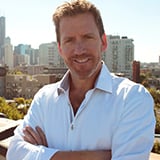
Christopher R. Rogala
President of Office Space Chicago, Inc.
“I time block my entire week in my calendar. I make an appointment with myself so that if someone needs me, I say ‘I have an appointment.’
When I really need to get things done, I turn off my email, I take my phone off the hook, and I put my cell on airplane mode so that I’m completely focused. I also put a ‘Do Not Disturb’ sign on my door.
I’ve learned that when things shift your focus, you lose so much time. Even taking a second to look at a notification on your phone or email can add up to a lot of lost time. When you do this in small increments all day and week long, it can add up quickly to hours of wasted time.
When you’re really into something and are completely focused on it, the work gets done better and it gets done more quickly. Don’t think multi-tasking works; it doesn’t. Focus on one task at hand to knock it out quickly and efficiently.
Number one rule: turn off email notifications — they are time zappers!”

Maxime Rieman
Director of Product Marketing for CoverWallet
“It's hard to stay focused when you're always checking a list of open items. Did I need to follow-up with a partner? Did my colleague respond to a question?
I always set up notifications of when an item should be concluded. A large portion of the time, the open item has already been wrapped up, but this helps me to make sure nothing falls through the cracks.
I use Google Calendar to set up notifications for a number of different open items. For example, if we know a conference is coming up in August and we need to prepare a number of materials for a campaign beginning three weeks before, I'll note all the pertinent information in an event and set up alerts for key dates.”

Lisa Chu
Owner of Black N Bianco
“Staying focused throughout my work day can sometimes be difficult due to stress. What I find to be very effective is taking a 10 minute break every two to three hours. It helps avoid my brain from burning out and doing some light exercise really helps prevent me from feeling tired.”
Your Email

Kate Sullivan
Content Director at TCK Publishing
“My secret weapon is Boomerang, a scheduling plugin for Gmail (we use Google Apps for work).
With this tool, I can write emails at any time of day and schedule them to send when needed. It doesn't seem that critical until you actually try it… and then you wonder how you lived without it.
Because TCK Publishing is a distributed team, it's important to be able to send emails that will appear during our teammates' working hours and not get buried in off-hours email piles. Plus, this lets me write emails late at night or super-early in the morning, when I have uninterrupted working time, then schedule them to send at, say, 8:54am on Tuesday.
That way, I'm not interrupting the other person, I don't create unfair expectations of checking email at all hours, and I can choose the sending time to optimize the odds of getting a response! It's a win-win.”

Alex Bentzinger
President of Bentz Creative LLC
“I check my email three times a day — when I get to work in the morning around 9, back from lunch around 1, and in the evening around 6.
It helps me to stay organized throughout the day so that my thoughts aren't all over the place.
I also will often take an email and put it into a to-do list item. I typically will mark a message as unread if there’s still something I need to do.”
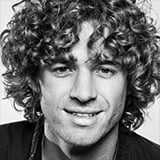
Phillip Van Nostrand
Fashion, Editorial, and Commercial Photographer
“All the emails that I need to respond to, I leave as ‘unread.’ For all my subscription emails that aren't important (but I still want to read), I use the program unroll.me. It allows you to easily unsubscribe to emails and then to have a daily digest of the rest of your emails, so my 5-10 subscriptions that I want to see all end up in a single email.
If I email someone, and it is an important email (like a job lead) I use followupthen and send that email back into my inbox within a few days or a week. Boomerang, and a few other gmail apps do this.
I have a few personal rules, like my inbox should never exceed 50 unread emails. And all personal, important emails should be responded to within 24 hours. I don't always succeed at this, but it's good to have guidelines.
Every once in awhile, if I have a lot of emails that seem too big to deal with, I will play a game where I close my eyes and just click on any one of them, and I have to respond — no matter what.”

Daniel Brady
Owner of Heavenly Hammocks & Swings
“I use email color coding in Thunderbird. After I've read an email and hopefully finished whatever action was needed to get it off of my to-do list, I hit a hotkey from 1-3 to color code the email.
Green is for completed, orange is for partially completed, and red is for demanding attention. I’ll leave it black if it’s unread. By the end of the day, my inbox should be fully green, or at least 99% green.
I don't want to leave any email jobs unfinished. Before using this technique, I would frequently forget where in my inbox I was up to, and I would sometimes forget some emails completely.”
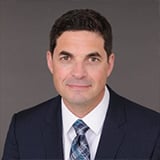
Christoph Seitz
CEO of CFR Rinkens
“Every day, I wake up around 5am and do about 30 minutes of emails when I first wake up. Getting an early start on emails reduces inbox anxiety for the rest of the day.
Throughout the day, I always try to work down emails as they come in, if possible. Since I primarily handle business development, the habit of staying on top of my emails helps push business forward.”

Maura Thomas
Author and Founder of RegainYourTime.com
“When you find you have a ‘spare’ minute, don’t default to email.
When you sit down at your desk and think ‘What do I need to do now?’ the sheer number of options can be overwhelming. And that probably causes you to retreat into busy work, something that is easy, familiar, and doesn’t require a lot of thought. For most people, this means email.
Work from your task list instead.”

Georgette Blau
Founder & President of On Location Tours
“I try to stay off email as much as possible and just focus on them during my commute. That way, I’m focused on working on the business more than working in the business, and I get through my “to do” checklist faster and more efficiently.”

Jennifer Bright Reich
cofounder of Momosa Publishing LLC and coauthor of The Mommy MD Guide to Losing Weight and Feeling Great
“I must get 400 emails a day, no joke. I use Microsoft Outlook. I’ve always tried hard to keep my inbox as clear as possible. My email, and for that matter, paper mail, philosophy is ‘TOUCH IT ONCE.’
So when I see it, I:
- read it,
- delete it,
- act on it, or
- file it.
The pace is so quick now with so many active jobs that the way I can be efficient is to schedule 15 minutes per day to “touch” each active project. The challenge is that emails for a job don’t come in at that scheduled 15 minutes! So, I’d get distracted by an email on Project A while I was supposed to be working on Project B! What I did was create inboxes for each active project.
Now, when I get emails — unless a house is on fire — I simply move it into the appropriate inbox to be dealt with during my 15-minute scheduled time.

Ted Chan
Founder & CEO of CareDash.com
“While many dread email, my inbox is the center of my workflow. 'Inbox Zero' is true Nirvana for me! Any unread subject lines are to-dos.
For instance, any employee at CareDash can send me a message with an instruction in the subject line, and they'll be sure I get to it. These processes are also integrated into our web workflows. For example, ZenDesk tickets, inquiries, or alerts that require my attention will automatically generate messages into my inbox. This allows me to have a full task list in one place, quickly filter out unimportant items, and work effectively wherever I have access to email.
This is important because I tend to spend time in the office between 10am and 6pm, but I'm still staying on top of urgent messages while I’m away from the office (i.e. on the train or at home).”
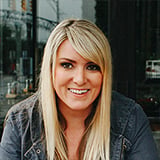
Shannon Mattern
Owner of WP+BFF
“I only check email twice a day, first thing in the morning and late afternoon. I have a vacation autoresponder set up to let customers know that I received their message and it has FAQs in it so that I can give people the instant help they need.”
To-Do Lists
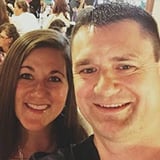
Nate Whitson
Thrive Experience Promoter/Blogger
“Less is more! A book that I love that has helped me get and stay organized is The One Thing by Gary Keller. In it, Keller talks about the ominous ‘To-Do List.’
Start with the to-do list, but narrow your focus. More is not more. Write down your list in its entirety. Then, put an M next to the ‘Must Do’ and an S next to the ‘Should Do.’ Take your list of Must Dos and create one more list… your ONE most important item. Start here and focus on it.
If you have time, re-look at your Must Do List and pick the next ONE thing. Proceed until time is up.
Whether you are trying to organize your calendar, your phone calls, your meetings, or whatever else is on your to-do list, it is important to recognize that not everything on your list is of equal importance.
Pick ONE thing, and repeat the process.
Focus on less and you'll get more done!”

Slisha Kankariya
Cofounder and CMO at Four Mine
“Make to-do lists at the beginning of your work day to set the tone for what you want to accomplish.
Cross things off the list as you finish them so that you can mentally and physically feel like you have accomplished something. This will motivate you to move onto the next task.”

Beth Hutchings
Co-Founder of Autotiv Manufacturing
“Put all your to-dos in one place. I personally use Trello, because I like the organization, but whether it's a notebook, to-do list app, or whiteboard, let that rule your life. No extra sticky-notes, no evernote + to-do list + iPhone notes + reminders.
One place.
Then you know you'll always have what you need.”

Steven Benson
Founder and CEO of Badger Maps
“I sort all my tasks by importance and due date. That way, in the busy times, I don’t forget to get back to important customers or investors.
There are a lot of great productivity apps out there, but I've always been a fan of the personalization and simplicity of a spreadsheet. I put my to-do list into a spreadsheet and regularly sort by what's important and what's due. I highlight things that are important but not urgent. This helps me stay organized and on top of my tasks throughout the day.
Another tip for business owners is write down every night the most important things you want to do tomorrow, and then do those things before you do anything else. I like to put this as a recurring calendar entry because then anything I don't do in a day can automatically roll over to the next day, and it blocks off a period of time for you to focus on those important things.”
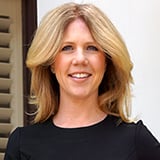
Deborah Sweeney
CEO of MyCorporation.com
“Utilize Post-It notes. I’m a big fan of using Post-Its to jot down daily to-do lists and organize my tasks accordingly. Then, I cross off what has been completed as I go and reshuffle priorities as needed.
The act of physically crossing off items on the list allows me to be able to look back on the day and see what all has been accomplished.”

Aisha Blake
Self-employed web developer and instructor
“I have one unlined notebook that I use as a brain dump. It holds my to-do lists, brainstorming results, interview notes, goals, and so much more. I date and number the pages so I can refer back to them later.
So, for example, on one page in my notebook, I wrote out an overview of the strategy I wanted to use to approach my work on a new client's website. It covers UI updates, content promotion, and ideas for creative ways to engage with their audience.
I referred back to that overview in my next meeting with the client and wrote the notes from that meeting underneath. I also taped a business card that showcased a variation on their brand's colors that they want to use more throughout the site.
Action items are marked with a star, and I cross them out upon completion so that I can see at a glance what still needs to be done.
The first page of the day gets a date, which is helpful when I'm trying to find notes from a particular time period or reconcile a timeline of events. If I know I'll want to refer back to a page's content again and again, its page number goes in the index (like the lazy woman's bullet journal).”

Vladimir Gendelman
Founder and CEO at Company Folders, Inc.
"I stay organized with Any.do. This app lets me keep my calendar and my to-do lists in the same place, so I always know what tasks I need to complete and where I need to be at any given time.
I can also separate my to-do lists into work, family, volunteer, and so on. This way, I can focus on my work to-do list while I'm at the office, then swap over to my family to-do list for the evening (I usually check it before I leave work, in case I need to run an errand like picking up milk on the way home). This separation lets me maintain a good work-life balance and check off my to-do list every day."
Scheduling & Planners

Nicole Helen Brunner
Owner of MostRecklessly
“One of the walls in my studio was painted with chalkboard paint so that I could keep better track of what items and the amount of each that I needed to produce.”
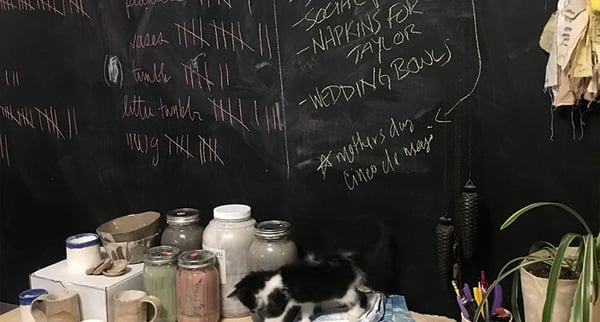

Luciana Torous
Owner of 3 Leaf Tea
“I like to block my time by prioritizing tasks in my planner. It's nice to see a layout of what needs to be done in a physical planner. Certain tasks have to be done in a day, while others can have more time. By labeling these tasks with different symbols, I'm able to see what I have to tackle first.
The following photo shows the following days on my planner, without any real important information showing.
- The asterisks are things that have to be done in that day,
- triangles are things that have to be done in the week, and
- dashes either have no set time, or there's a certain date (which I write on the side) in the future.”


Aisha Blake
Self-employed web developer and instructor
“I use a paper calendar. My friends chuckle at me for this, but it works! I carry it around everywhere I go, so I always have easy access to my schedule.
Weekdays are broken up into 15-minute increments, so it gives me an awesome visual breakdown of my days.”

Ran Craycraft
Managing Partner at Wildebeest
“Keeping an eye on social media, especially LinkedIn, is critical for driving new business. However, assigning a fixed amount of time ensures you don't get lost in a rabbit hole that derails the rest of your day.
I live and die by my calendar. I use it as a checklist for everything I need to do for the day. When a task comes up that I can't do immediately, it goes on my Google Calendar as an appointment with an estimate of the time I expect to spend on it. At the end of each day, if I wasn't able to clear my calendar of all open items, then I move it over to the next day.”

Lori Cheek
Founder & CEO of Cheekd
“After running a small business for nearly 5 years, I've learned that the best way to get things done efficiently is to schedule everything.
Put even the smallest of tasks on your calendar, and if you don’t complete it, keep rescheduling it until you can mark it as completed. It can sometimes make your schedule appear overwhelming, but once you start knocking things off the list, it feels pretty productive.”

Grainne Kelly
Founder of BubbleBum Car Travel Innovations
“Keep a portable calendar. Whether you’re on a team electronic calendar, or you go old school on a paper calendar, it’s crucial to keep all your important information in one place. This includes meetings, flight times, hotel information, rental car details, and addresses.
Also, stay on the same page with your family back home by utilizing Google Calendar. Google Calendar is a shared time-management and scheduling calendar service that allows users to create and edit events. Reminders can be enabled for events, with options available for type and time. Event locations can also be added, and other users can be invited to the events.”

Beth Hutchings
Co-Founder of Autotiv Manufacturing
“Put everything in one calendar. I use Google Calendar, because it can sync across all my devices.
I don't leave anything in my brain where it can get lost.”

Mark Aselstine
Founder of Uncorked Ventures
“It's easy to get caught up in the fact that everything has to be done immediately. But, really, it doesn't.
As an example, customer emails and phone calls come in constantly, but do they need to be returned in real time? It's nice for the customer, sure. But, that doesn't help you focus on projects that grow your bottom line. It definitely doesn't help with long-term projects.
Personally, I handle tasks that are non essential (at least as far as completion time) in short blocks, once or twice per day. I return customer emails at the end of the day.”
Your Work Space & (Ugh) Paperwork

Grainne Kelly
Founder of BubbleBum Car Travel Innovations
“You may find that you are much more productive on certain tasks when you work outside of the office.
For example, when I drive, I have my phone on dictaphone, because that is when I think (only on long drives on the freeway). I also make a lot of my calls when I am on long distance drives (handsfree of course), as long as I am not required to take notes.
Also, I try to hold creative meetings outside of the office whenever possible, as I believe that new surroundings inspire. These meetings can be held anywhere from the local coffee shop to the library to the local swimming pool.”

Steph Taylor
Founder of The Sugarfree Box and Wildbloom
“With paperwork, I have started scanning in useful documents. Receipts have been a huge one – they form a lot of desk clutter, so I've started using the Xero app to photograph each receipt and enter it into my accounting system. Then, I throw it in the trash straight away.”
Don’t forget to keep track of your receipts!
Get The Ultimate Tax Deductions CheckList for Independent Insurance Agents.
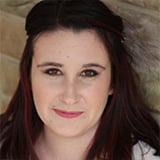
Hannah Sandoval
Owner of PurpleInkPen
“Computer folders are my absolute best friend. In the freelance writing business, you’re usually working mostly online and in Word. You have documents for absolutely everything, and with that little blue and white Word symbol next to them all, they start to run together.
I make folders for everything. I have folders within folders within folders. That way, you’re never looking at a long string of documents that all look the same, trying to grab out a specific title with a not-so-quick scan.
You always know exactly which folder to look in when you need something, and you spare yourself the awful panic that you’ve lost something in that sea of blue and white.”

Edrie A. Pfeiffer
Attorney at Hampton Roads Legal Services
“I try to handle paperwork as little as possible. If I have something that I can handle very quickly, I do it right then. Otherwise, it goes into my to-do stack, which I work on through the day.
My staff uses folders to leave me paperwork that I need to sign or review. They give me the folders once a day so I am not constantly being interrupted.
I am old school, so I prefer to look at physical paperwork, but we store all documents electronically. We keep most physical paperwork in client files or the staff puts documents that need my attention in the daily folders for me.
The to-do stack is divided into two parts: one is long term projects that don’t have deadlines, and I work on them as I have time. The second stack is the more urgent stack, and I will stay at work until I have finished that stack, which is why I block out the time during the day to work on these things. It is rare that I have to stay late at work because of urgent matters that didn’t get finished during the day.”

Lori Cheek
Founder & CEO of Cheekd
“After running my startup for over six years, I’ve tried working from just about everywhere in NYC… a handful of co-working spaces, a members only club called The Soho House, coffee shops, and even sometimes at a bar!
The place I’ve found I have the most focus is at home at my kitchen table.
As soon as I settle in, I organize my workspace. Having a clean workspace helps me focus and feel structured. After I organize everything, I settle in with a cup of coffee and try to relax for 15 minutes before diving into the grind. Then, I prioritize my day’s to-do list and map out the rest of my day.
I find a great Spotify channel, put on imaginary blinders, and buckle down for hours on end. There’s always reliable wifi, and no one is around to distract me.

Slisha Kankariya
Cofounder and CMO at Four Mine
“Spend 5 minutes every morning before diving into your work cleaning up your workspace. Get rid of clutter, old papers, and anything that you truly don't need. This will prepare you to tackle anything that comes your way with a clean and open mind.”

Zondra Wilson
Owner of Blu Skin Care, LLC
“It has been reported that the average person wastes over four hours per week searching for papers. Go through your filing cabinets and shred anything that’s out of date or no longer relevant to your business.”
Your Website

Desare Kohn-Laski
Owner of Skye Louis Realty
“Many people may find themselves asking if a website is really necessary. Aside from providing a profile, having a website is beneficial to
- satisfy mobile consumers,
- grow your business, and
- create client trust.
For these reasons, I find it very important to keep my page updated.
Having a short and straight to the point ‘About Us’ or “About Me’ on the main page is effective for making it clear what services you offer.”

John Crestani
Marketing & Internet Business Expert
“My personal website is like my calling card — everything anyone would need to know, and any social profile people would need to connect to, is on my site. I am very vigilant about keeping my website updated to reflect the latest and greatest information that people would need to know. I don't think it makes sense to do any work that's not online anymore.”

Dylan
Owner of OrangeSkyCo.com
“My number one tip would be to create a good website where your customers can find all of their answers. If done properly, it'll free up your time for more important things, like growth.
Our website is crucial. We show our credibility through it with photos, reviews, and tour descriptions, and it works like a full-time staff member, one who can reserve bookings 24-7 and answer any customer questions on our FAQ page.
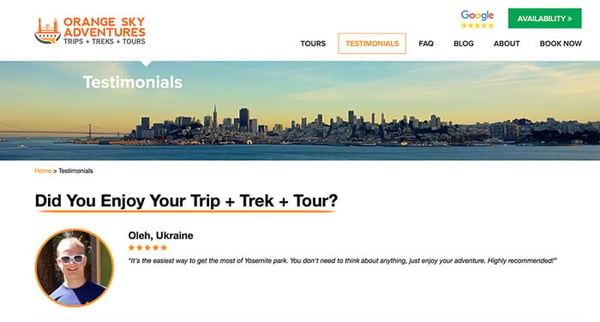
A good website, however, takes time. You need to constantly learn, be able to make changes on the fly, and bring in experts for technical jobs.
It took me hundreds of hours to create, but saves me hundreds of hours on the back end.
Well worth it.
A few good places to start:
For more information on how to create an agent website, go here.
And to learn how to get hundreds of testimonials, watch this tutorial.

Sophie Livingston
Freelance Copywriter & Owner of Kickstart Content
“As a copywriter, a lot of my time is spent researching my client’s business. I use forms on my website to help me obtain the information I need from a client.
It’s quicker and easier than emailing back and forth – when a client fills out the form, they know exactly what I need from them before I can get started. I use the Wordpress plugin Contact Form 7 and also the Typeform app.”

Christopher R. Rogala
President of Office Space Chicago, Inc.
“My website saves me a ton of time. Clients are able to fill out a form. When they do that, I get an email, they get an auto-response with helpful information on how we work and a note saying that I’ll be with them soon, and their information automatically goes into my CRM (I use Zoho.com).”

Example of the email received when a client fills out the form.

Tom Antion
Founder of Internet Marketing Training Center of Virginia
“We use SpeakPipe on our website. This allows people to leave us a voicemail without picking up a phone. We get an email which we can respond to via voice, and we don't have to get stuck on a long call until the prospect is more qualified. The website visitor likes it, and so do we.”

Bruce W. Cameron
Licensed Counselor and Executive Coach
“Websites describe our service lines. We try to keep those very clear and finite. Very rare do we get odd ball calls for services that are way out the scope of what we do. Also, the social media echoes the tenor of our service lines.”

Carter Smith
CEO & Owner of Complete Revenue Solutions
“My website is used as a lead generation tool. Whenever my sales and marketing team meet new contacts and leads, they are immediately referred to our website to fill out a contact form. This keeps all leads organized in our CRM and keeps us on track for obtaining new business.
Our website also serves as an additional marketing tool. It is far more in-depth than a typical brochure or information sheet, and it gives leads the ability to really dig into our company history.”

Eric Anthony
Founder of StreamingObserver.com
“We have a blog on our website that essentially answers everything our customers need to know. Our site is a guide to cutting the cable cord, so everything we put on our website is with that in mind.”

Breanne Zapien
Founder of Resultsva
“I like to think of my website as an employee. Each page has a job to do that will make my life easier.
When a client needs more information rather than just filling out a form and waiting, we immediately follow up with automated content relevant to their needs.
The best advice I received was to have a page on my website of Should Ask Questions rather than Frequently Asked Questions to give users a better understanding not only of what we do, but how it will benefit them.”

Kate Sullivan
Content Director at TCK Publishing
“We have our FAQ posted in several places around our website and linked to within major sections of the site where we get a lot of questions.”

Chetan Saxena
Business Unit Head at DigitalSuccess.us
“Your website is your brochure with some interactivity. While writing content for your website, you need to ensure you are answering the most obvious questions of a user and being detailed yet crisp while talking about your services.
People typically look for questions like ‘what’s your experience?’ or ‘what’s your methodology?’ so before they communicate with you, they can be pre-informed and they will appreciate you for your clarity.”
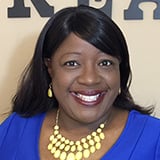
Crystal L. Cochren
Owner of Interwoven Creations by Crystal
“I have a ‘Request A Quote’ page that I use to filter people who are not serious about ordering a custom item.
When I receive questions via social media, I direct everyone to that page.”

Neil Andrew
Account Manager at Piccana Ltd
“As a service based business, we found the best approach was to thoroughly explain each service we offer and then offer users the opportunity to chat live with us if they have any questions.
Receiving live chats actually helps our workflow, as our sales agents can immediately move them into our pipeline for follow-up consultations.”

Vid Lamonte' Buggs Jr.
Founder & Owner of VLB/VBJ Enterprises, LLC and 4-U-Nique Publishing, LLC
“Our website has information about our services that is clear and direct. We also have a Frequently Asked Questions page. Both of these elements help keep our inboxes and phone lines clear of common questions, thus allowing us to spend more time helping our clients and prospective clients in reaching their goals.”
Setting Goals

Wells Lyons
Founder of Resistance Enterprises
“When you're unorganized, it's easy to look at the clock at the end of workday and realize that you didn't finish the projects you needed to. The first thing we do to organize our day, is to ask a simple question:
‘If I accomplish nothing else, what are the three most important tasks I need to get done?’
Starting the day knowing what you need to work on helps prioritize your time.”

Bryan Koontz
CEO of Guidefitter
“Each Monday, my team and I huddle up for our ‘weekly goals’ meeting. Everyone lists 3-4 individual goals they'd like to accomplish by Friday. These goals are written down on our large company whiteboard. This sets the tone for the week and keeps individual targets organized and concise.”

Nicole Helen Brunner
Owner of MostRecklessly
“Every quarter, I take a few days to have a brainstorming session, gather all my sketches, create lists and goals of what I want to accomplish, and how to do so.
Once I refine those, I write them on a big piece of paper that gets hung on the wall. Every week or so, I will make notes to indicate how far along I am on the completing them.”

Lynel Brown
VP at Brown Safe Manufacturing, Inc
“There are countless organizing systems, planners, apps, etc. I use a number of them, but keeping a good handle on my top 1-2 goals rather than a never-ending to-do list has not only relieved a great deal of stress, but it has also let me be far more effective.
It is quite easy to get caught up checking items off a list, but unless they are getting you strategically closer to your goals, you will be lost in a stressful game of catch up.”

André Gauci
CEO & Co-founder of Fusioo
“Focus is key for staying organized. One of the best ways to keep focused is to pick one clear goal for the week. Any tasks, messages, or emails that don't help me reach that goal are put aside and dealt with later on.”
Productivity Software & Digital Tools

Bryan Koontz
CEO of Guidefitter
“For to-do lists and tasks that require a collaborative effort, we utilize Google Docs so information can be shared and kept uniform among team members.
This helps with anything from data-heavy excel files to happy hour and lunch surveys. Instead of emailing copies and edits of files, or losing sticky notes and hand-written notepads, Google Docs keeps our to-do lists safe and secure.”

Tehzeeb Lalani
Proprietor at Scale Beyond Scale
“I have integrated Calendly onto my site. Potential clients can schedule a phone call, which syncs to my Google calendar. This saves time by avoiding back and forth communication in trying to schedule a call.”

Codrin Arsene
Managing Partner & Chief Content Strategist at Digital Authority Partners
”We use i done this for quick daily reports on activities completed. We use Asana to manage the details of upcoming projects & deadlines (Asana also sends reminder emails that come in handy). For day to day communications, our Slack channel is always open. And to manage my personal daily workflow efficiently, I use Evernote. And the beauty with all these software products is that they are all free to use.
Staying organized in this day and age is a breeze. All you have to do is adopt the right tools to keep your affairs in order. And if you have a team, you must make sure they also use the same tools and process.”

Sacha Ferrandi
Founder & Head Principal of Source Capital Funding, Inc. and Texas Hard Money
“One of the biggest organizational strategies our company has implemented that paid big dividends was going paperless and utilizing cloud-based applications.
Going paperless doesn’t only equate to paperwork and hardcopy documents. We are now using cloud-based applications like Google Calendar, Google Drive, and Google Docs to keep everyone’s schedules, documents, and collaborative work organized and in one place.
By using these applications, it allows our staff to find documents with ease, regardless of the age of the file or knowing who originally created the document, rather than having to shuffle through loose paperwork.
Furthermore, with the ability to view everyone’s work schedule, utilizing a cloud-based calendar has allowed our employees to better set meetings with co-workers or reserve a given conference room without stepping on anyone else's toes.”
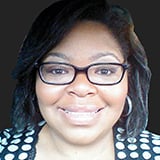
Ashley Hill
CEO of College Prep Ready
“My number one tool for staying organized is Google Drive. I love this tool, because I have all of my templates, contracts, emails, calendar, and more at my fingertips.
Also, I start my day by getting clarity on my tasks for the day.”

Wells Lyons
Founder of Resistance Enterprises
“We find the app Todoist extremely helpful. It allows us to sort and schedule projects by both importance and urgency. It's a real time saver."

Sophie Livingston
Freelance Copywriter & Owner of Kickstart Content
“I use the free project management tool Trello to help me organize and structure my workload. It helps a lot, as does only logging into social media at the start and end of each working day.”

Brandyn Morelli
Brandyn.co
“I’m a huge advocate of leveraging tools to help optimize my day. For email, I use Sanebox, which helps organize important emails and filter out newsletters, promotions, and other non essential messages.
I keep a backlog of all my daily tasks in Trello which I can share with my team. This allows us to prioritize what’s to be done, and see who’s working on what. This transparency gives us actionable insight to see where things are getting held up, and it keeps everything running efficiently.”

Tiara Salley
Owner of Reese, Salley and Associates
“Oftentimes, I listen to music or use an app called Coffitivity to help produce a controlled noise factor that I desperately need.
I keep track of tasks and things to do via Trello, Google Calendar, or one of my many planners.”

Alex Bentzinger
President of Bentz Creative LLC
“We use Mavenlink. We’ll invite in clients and consultants so that everyone can post files, invoices, dates, assignments, etc. Anyone can post something or ask a question. It has really helped us with project management.”

Grainne Kelly
Founder of BubbleBum Car Travel Innovations
“Download the Evernote App. Evernote helps you work more efficiently on the road by keeping track of everything in one place. You can create a project to-do list, log reminders for yourself, take notes in a meeting, record a soundbite, and keep track of photos.
Once you’re back home, everything you need from your trip is in once place and is accessible wherever you go.”

Nicole Helen Brunner
Owner of MostRecklessly
“Programs like Zipbooks or Google Docs help to keep track of expenses, PR, and research. For receipts, I have a binder at the entrance of my apartment where I dump my purse out weekly to organize them, and I eventually get them all scanned into my computer.”

Deborah Sweeney
CEO of MyCorporation.com
“Listen to Omvana. This is a meditation app that I use for 10 minutes each morning that allows me to set my intentions for a productive day. It helps me to stay organized, it keeps me on track, and I feel a little less frazzled.”

Mira Zaki
Owner of Mira Zaki Photography
“I use the app Asana for task management. I can separate personal from business tasks, give them deadlines, and mark them off when completed.”

Steve Silberberg
Owner and Founder of Fitpacking.com
“Put everything on Google Drive or other cloud-based storage. You will often need to share, send, or collaborate, and having it all online keeps items accessible to everyone who needs them. Plus, others share in the organizing, so if you forget where something is, one of your colleagues will know.”

Karen McFarlane
Founder of Kaye Media Partners
“The entire G-suite is always at my fingertips. Google Drive is great for document creation, storage, and file sharing. Google Keep organizes my many to-do lists. Google Calendar governs my time.”

Thomas Adams
Entrepreneur & Digital Marketing Expert
“I organize all of my information within Google Drive in several different folders. I organize the folders to accommodate clients' information, important documents for my eCommerce business, my niche sites, etc.”

Kostis Mamassis
Founder and CEO of Megaventory
“I use Trello for assigning tasks to employees, keeping track of deadlines, and primarily ensuring nothing is ever forgotten. I also rely on Pipedrive for tracking our next action when pursuing a lead. It’s great that it is very user-friendly and feature-rich at the same time.
At the moment, I’m trying out Toggl, and it seems very promising. It helps you track the time you spent for each task so you know what needs optimizing. Also, serious time-tracking helps for future reference when I need to know how long it will take me to do something for a client. "
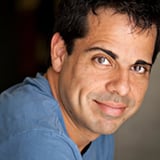
Michael Mason
Owner of Perfect Chaos Films
“For organization in my business (and also for personal use), I use Evernote. But any note app should do. I keep a list of things I want to do grouped by three tiers:
- Stuff that needs to be done right away
- Mid-term tasks/goals
- The Master List
Basically, the first tier is a to-do list — a list of short-term things I can accomplish today or this week. This may be writing a blog post or writing a proposal.
The second tier is mid-term things like hitting a certain sales goal for the year or getting my SEO onto the first page of SERPs.
And then the third tier is long-term items. This is basically a bucket list, so things like opening a new location or getting to a certain revenue level. I call this note the ‘Master List.’
On top of that, I have another note that corresponds to each task/goal. For instance, if #27 on my list is to get a top 5 ranking for the keyword ‘video production companies in Austin, I'll have another note labeled as such that will have all the information pertaining to that goal.
So, within this note, I might have progress of my search ranking over time, things I'm doing to reach this goal, etc. Essentially, I've got all my information on achieving my business goals in one app.”
Your Phone

Alex Bentzinger
President of Bentz Creative LLC
“I use Google Voice for phone calls. I have an office number set up that only works from 9-5.
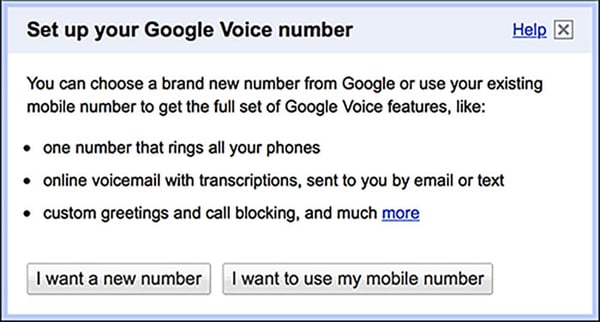
A nice feature is that it’s a local number, which is actually really important to make sure people answer it. People will often ignore calls if it’s from a foreign area code, because it’s most likely a sales call.”

Julia Angelen Joy
PR Consultant
“I have had two phones for a lot of my consulting career. It just made sense in the early days when I had a landline. I kept it for years in my home office, as a tax write off as my work number.
Now, because I work in PR and social media is actually part of my job, my social media is loaded on my smartphone, and I'm attached to it almost 24/7.
If I were in another line of business, then I would have separate phones and write a portion of the expense off as well.
I like the separation of business and pleasure. I want to be able to be ‘off work.’ Two phones helps with that.”

Ken Wilshire
Owner/Operator of All America Fine Finishes
“I answer my phone during business hours, which for me, is 9-9 everyday.
I have learned that if I don't answer my phone, it sets me up for a stressful equation of phone tag + uncertainty + anxiety = non organization.
If I book a job or estimate, I will add this person's name to my phone's calendar so that at a glance, I can know what days I have available.”
Work Hours

Steven Benson
Founder and CEO of Badger Maps
“The way I carve off time to focus on getting the important things done is by working late at night when there aren't distractions.
The other thing that has worked just as well for me is waking up early and working. In either case, the key is that the phone doesn't ring, there are no meetings, and no one is grabbing me to take care of things that are on fire.
It’s also important to have half my day unscheduled. So many things come up that if you didn't have unblocked time throughout the day, you wouldn't be able to jump into the things that are really important to keeping the team moving efficiently. Also, sometimes you need to block off the unscheduled time to do something that is critical.”

Brandon Doyle
CEO & Founder of Wallaroo Media
“The nice thing about being a small business owner is that you can choose your own hours. The catch is that those hours are 24/7.
I like to wake up early, eat a healthy breakfast, shower, and then hit email and my to-do list until about 10am. I have found that I am the most productive in the mornings. I can typically get most of my daily work done by 10am.
Then, I meet with the team, clients, phone calls, proposals, etc. until about 4pm. Then, I leave the office, workout, and hang out with my wife and children until 8pm.
In the evenings, I work on more business-related stuff, like marketing, studying, finances, etc. What's most important is finding out what works best for you!”

Lisa Hinsberger
Project Development Consultant at VIATechnnik
“Today's' technology has allowed us to be available at any time during the day, which definitely has its benefits and downfalls. If I get up early and get online, I find that I am more productive, because I don't have to play catch up the rest of the day.
If I get an early start, I oftentimes find that I get a lot more things accomplished. It's just a good feeling to be up early.”

Breanne Zapien
Founder of Resultsva
“I start my workday at 7am from home, tackling the task I want to least while I'm fresh and alert. This helps the day by not having anything hanging over my head.
I’m in the office 8:30am-4:45pm, and then I go workout. Having a workout in the late afternoon recharges me.
From 7-8:30pm, I finish projects that need to be completed before day’s end for my West coast clients.”
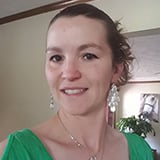
Codie Cyrus
Owner of C&C Piping and Fabrication
“When you have a business and it’s self ran, you have to be flexible with your schedule.
I work mainly from 8:15 to 5-ish. It doesn't matter what time others are reaching out to you — remember that there are very few real fires, and you will know it when they are ablazing.”

Dave Lavinsky
Founder of BusinessPlanTemplate.com
“I start work at 6am. From 6am to 6:30am, I check and respond to all emails in my inbox.
That way, after dropping my kids off at school and arriving to work at 8am, I usually have a clean email inbox and can efficiently start my day.
I end the day at 5pm and head straight to the gym.
Every minute on my calendar is blocked off. I have blocked hours to complete important to-dos. I also have blocked off time periods to eat lunch or check email. When you block off hours/time chunks, you tend to work more efficiently (since you know there's a limited amount of time you have).”

Desare Kohn-Laski
Owner of Skye Louis Realty
“I’m an early bird. I wake up at 4:30am and work out between 5 and 6. It oddly enough helps me feel more energized throughout the day.
It’s also nice knowing I have some ‘me’ time to draft my list of tasks for the day and knock some of those off the list before appointments and phone calls start coming in.”

Ian Naylor
CEO & Founder of AppInstitute
“Personally, I'm an early bird, I live to be out of the house by 5:30am, giving time for a little exercise, whilst at the same time thinking about the key tasks for the day.
This clear, uninterrupted thinking time allows me to compile a days to-do list before I've hit my desk at 7:30am, giving plenty of time to ' eat the frog' before the day proper (and distractions) begins.”

Matthew Edgar
Owner of Elementive
“I do my best to maintain a steady routine. I get into my office about the same time each morning around 8am, and typically, I leave my office around 5pm for dinner.
If things are busy, I'll come back in my office to work, but I do my best not to work any later than 8pm. This routine really does help me to stay organized, because I always know about how much time I'm working with when I schedule out my week.
The more I hold to this routine, the less I risk trying to pack too much into my schedule or overbook myself. I know my limits, I know what I have available, and I can work within that.”

Ludovic Vuillier
Executive Director at Baer's Crest
“My workday starts at 6am so that I have time to focus on work that is important without any interruptions.
Besides that, I have work times during the day in which I focus on different things. For example, from 6-9am, I focus on important things that require focus. I then take a break to check email, social media, walk around, etc.
From 10am-1pm, I work on client related tasks and meetings. Again, at that point, I take a break for lunch and just rest my mind. From 2pm-5:30pm, I do various tasks that don’t require much brainpower.
For the last half hour, I wrap up the day and then I do not do anything related to work until the next morning. This lets me focus on work by being able to focus on different aspects, while taking breaks to give my mind some breathing space. At the end of the day, it lets me have a personal life meaning that when I work, I can be there 100%.”

Adam M. Hyers
Owner of Hyers and Associates, Inc
“I work somewhat irregular hours since I have clients on the East and West coasts. That might mean taking an hour off around 4pm to hit the gym, then making a few calls after that. And then it's a matter of returning all important emails first thing in the morning (each day) so that I can move on to prospecting after that.
It's really just about having a system and sticking to it each day. Of course, some days I'll get off-track and have to tackle something unexpected, but I know it won't be like that all week.”
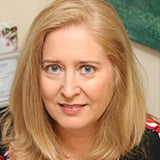
Elise Walton
Owner of Balanced Harmony Massage and Game Change: Business of Massage Therapy Podcast
“I always do bookwork on Saturday mornings when it is quiet. If you stay on top of the accounting, it’s quick.”
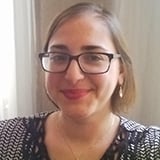
Jyssica Schwartz
Director of Sales for Authors Unite
“I work from home, and I try to have specific business hours. I start working between 8:30 and 9am, and I am working most of the day, sometimes with a break to take a walk or go to the gym. I usually work until my husband gets home from work, around 7pm.”

Grainne Kelly
Founder of BubbleBum Car Travel Innovations
“Balancing my work and family life takes consistent effort. One way I do this is by having a ‘Rule of the Stairs,’ where there is no talking about work or anyone or anything related to work after stepping on the first step of the stairs.
I am also very clear about boundaries from the start and have rules about meal times and time off.”

Sophie Livingston
Freelance Copywriter & Owner of Kickstart Content
“Despite ditching the traditional 9-5 job, I now find myself working 9-5 every weekday.
Having a routine helps me to stay focused and balance my work with my personal life. If I didn’t set myself a strict schedule, I’d be working most evenings and my relationships would suffer.”

Neil Andrew
Account Manager at Piccana Ltd
“Personally, I start work at 8am, giving me one hour before the mad morning rush to get everything sorted.
However, our employees have the option of starting anytime between 7am and 11am. Those who choose to start later find it helps them stay more organized as they continue working after most other businesses are closed, allowing them to prepare for the next day.”
And, to wrap it all up, Alex Bentzinger explains that it’s all about the baby steps. He says, “Take small steps initially. Make small victories. Don’t commit to a huge goal at first.”
After all, you know what they say… if you can just get started, you’re halfway there.
From all of us at New Horizons, good selling!
